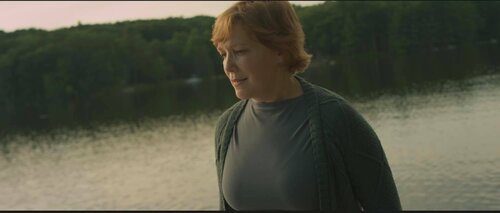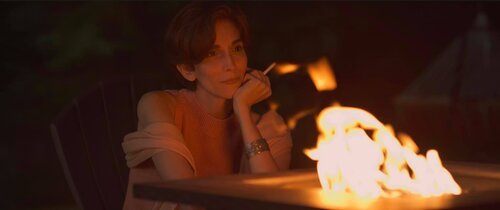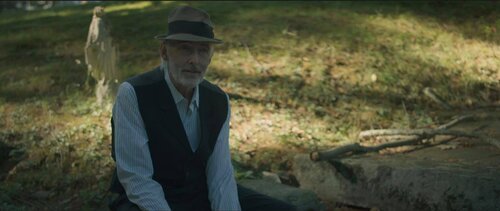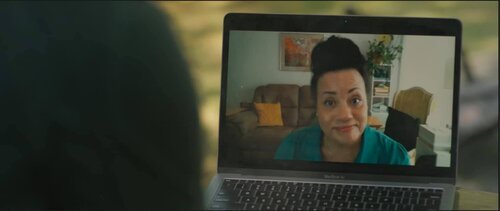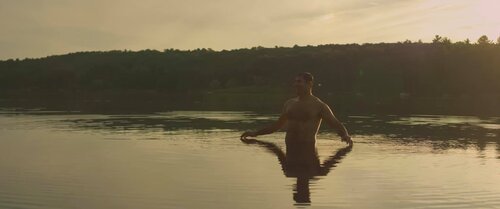In 2018 I was granted the Hemera Contemplative Fellowship for Artists and went off to the Zen Mountain Monastery for a retreat.
I had never explored anything of the sort but was always fascinated with meditation and the Buddhist experience.
The closest I came was probably my acting training. The foundation of the program was Suzuki, a post-modern Japanese movement technique. Basically, the method approaches text from a physical standpoint whereas Western trainings tended to start from the psychological. In Tadashi Suzuki’s seminal work The Way of Acting, he states that the exercises he created for his actors were “a means to discover a self-consciousness of the interior of the body, and the actor’s success in doing them confirms his ability to make that discovery. The actor learns to become conscious of the many layers of sensitivity within his own body.”
Of course physicality and the traditions of Japanese performance are no strangers to one another; one simply needs to turn to Noh or Kabuki for evidence. It is said that such movements are akin to worship as physical performers call forth energy with their bodies to then ingest that vigor inwards, representing the maturation or fullness of that life energy.
My own teacher, Maria Porter, trained with Suzuki himself in Japan and made it her artistic mission to fuse and repurpose this Eastern acting methodology with the trainings of the West.
These vague (but related) connections were my only points of access, outside of various cultural depictions, to some aspects of Zen Buddhism, which commenced in China but later branched out to Vietnam, Korea, and Japan (of course Buddhism itself originated in India).
Needless to say, I was intrigued to learn and delve into the Zen Buddhist lineage established by the late John Daido Loori Roshi. The monastery maintained that they were dedicated to sharing the dharma as it has been passed down, generation to generation, since the time of Shakyamuni Buddha.
I didn’t quite know what that meant but I knew they offered something unique as part of the retreat: the opportunity to study Zen Art. I also really didn’t know what Zen Art was but figured it would somehow expand my knowledge and perspective in regard to my craft.
And so I went out into the peaceful woods, put away my phone for the duration of my stay, and approached the main building that at one time was a Benedictine monastery.
I strolled through the meditation and dining halls until I found myself in the dormitory for visiting practitioners. I put my bag down not knowing what to expect. I took a deep breath. And I began my journey.
Throughout the retreat I, along with numerous others, participated in all the customary happenings one might predict; we were woken up every morning by a gong, had vows of silence, ate healthily (and deliciously), learned meditative disciplines such as zazen, helped clean the residence, acknowledged our thoughts as we attempted to clear our minds, learned about the history and legacy of Zen Buddhism, engaged in liturgy, and inevitably did not reach enlightenment.
But it was the Zen Art, as I predicted, that struck me most. Zen priest Jody Hojin Kimmel, Sensei, taught the class.
The session, at first glance, seemed quite elementary. We were painting pictures and they weren’t necessarily meant to be “good” by the standards of any certified art historian. We painted on instinct. We painted without looking. We painted without caring about the colors. We moved our brush not with a sense of purpose but with the pull of creative inertia.
The cornerstone of the practice depended upon an artist’s willingness to feel a piece instead of planning it. I recalled instantly the acting note I would always receive in the early years of my studies: You’re in your head; get out of your head!
And so I did my best. Little by little, I left my preconceived notions behind. I did not think what I wanted the piece to look like. I did not think about what I wanted it to say. I just painted.
A sense memory emerged as my mind made a further connection to my old training. Theatrical performances that are in the Suzuki style often challenge audiences to recognize that the feeling a piece evokes supersedes the intellectual understanding of it. In this way, I felt a bit at home as this helped ease me into the concept of Zen Art.
Hojin Sensei spoke of the relationships between artist and subject, artist and object, and object and audience. I found it fascinating.
I painted one picture in particular that I deemed worthy of my attention. If you saw it, you would probably wonder which kindergartener drew it, but to me I looked at the piece and saw the universe, wonderment and possibility. I thought, in a way, it was a study of myself. Perhaps all Zen Art is. Perhaps all art is.
I wish I still had it. Ironically I think someone mistook it for modern muck and tossed it accordingly.
During the last night of our retreat, as we meditated in the zendō, we were told there would be a treat that not every group experienced due to scheduling. The Rōshi of the Mountains and Rivers Order, the abbot of the monastery, Geoffrey Shugen Arnold, would be seeing interested practitioners one at a time for a very brief encounter. We were given the opportunity to ask him one question, any question, and he would answer it. We quickly learned the ritual, the proper way to bow and kneel in front of him, and the conventional way to address and speak to him. We formed a seated line outside of his office and waited our turn, nervous that we were going to screw up the customs and formalities.
His office was more like a miniature monastery. He sat in the center of the room; his body typified the characteristics one thinks of when imagining such a figure. I performed the procedure (aware that it indeed very much felt like a performance) and sat across from him. I knew what my question was going to be from the moment the opportunity presented itself. I was going to ask about Zen Art and its realistic implementation in film. After all, Zen Art seemed antithetical from a logistics point of view as a director and a crew tend to need to know what’s coming next. And so I asked.
Shugen Roshi nodded his head and thought. He talked about balance, acknowledging the need for planning and practicality. But he stressed that I should find moments. Those small moments. Moments when I could let go and allow a course of action to unfold in the way it seemingly wanted to.
At the time, I think I was disappointed in the answer. I nodded gracefully and thanked him.
At the end of the retreat I felt refreshed and calmed. I walked out and headed towards my vehicle to find a dent. That’s right: my car had been hit in the Zen Mountain Monastery parking lot. Apparently, the universe balances out very quickly. I actually snickered in disbelief. The small moments. Luckily it was minor and the individual responsible gave me her name and information.
On the drive home I wondered where the happy medium existed in film, the goldilocks zone of embracing the unplanned and accepting the spontaneous (that stretched far beyond improvisation) without jeopardizing a project.
Two years later, during the height of a pandemic, I received an opportunity to experiment with this concept when I was hired by Teri Hansen to direct her short film Into the Water. Of all the projects I had been a part of, this one seemed to lend itself most towards the liberating practice of Zen Art.
Into the Water was a spiritual journey about a woman who ethereally encounters her anxieties, fears, ambitions, and dreams - for when there is seemingly insurmountable hardship, there is always hope. The film’s themes include rebirth, self-examination, and the ever-blurred relationship between endings and beginnings. It was very much inspired by the Buddhist concept of Bardo.
And so, when filmmaking seemed to be at a momentary standstill, 19 ambitious artists, including a handful of Broadway actors, went to a lake house, followed all the newly created health guidelines, and made a union-approved movie.
This was the first film I directed where I did not pen script. It was not my story. It was Teri’s and it was personal to her. She was the producer and lead. I would have normally been far more specific and stringent with what I envisioned but I found for the first time that was not truly my job; my job was to try and understand her vision and attempt, to the best of my ability, to bring it to life.
I found my naturally less personal relationship to the material, in some sense, freeing. I just let things roll, pun very much intended.
I started to judge the performances and sequences not through my usual lenses of discernment and continuity but instead through a connectivity of sensation. I sought out the small moments - moments of impressions and evocations. They became my cinematic chaperone, guiding me towards the truth of a scene, the truth of a character, and the truth of a moment.
Interesting to note, Zen Art wasn’t the only inspiration I drew from for this project. I also channeled my inner Werner Herzog (I didn’t even know I had an inner Wener Herzog). I knew our schedule required us to often shoot in a single shot to save time and thusly we were going to avoid shooting for coverage. Who better than Herzog for such an approach? The unchained freeness of flow of the camera and its relationship to the image has been a trademark of Herzog throughout his career and that technique seemed to mesh well with both what we were attempting to create and Zen Art itself. As the director himself has said, the goal is to capture “only the truly intense and the remarkable.” Perhaps the New German Cinema pioneer had been a Zen Artist all this time.
I often think to myself – what’s next in my Zen Art journey? How can I build off that singular experience? Surely every project could benefit from a touch of that artistic independence. I constantly attempt to balance such unrestraint with self-imposed constraint. The mere thought tends to spiral me into vexation.
At such times, I think of Shugen Roshi and the way he nodded his head and thought. I think how he spoke of balance; the need for planning and practicality. I think about what he stressed: those small moments. I think about letting go and allowing my art to unfold in whatever way it wants to.




